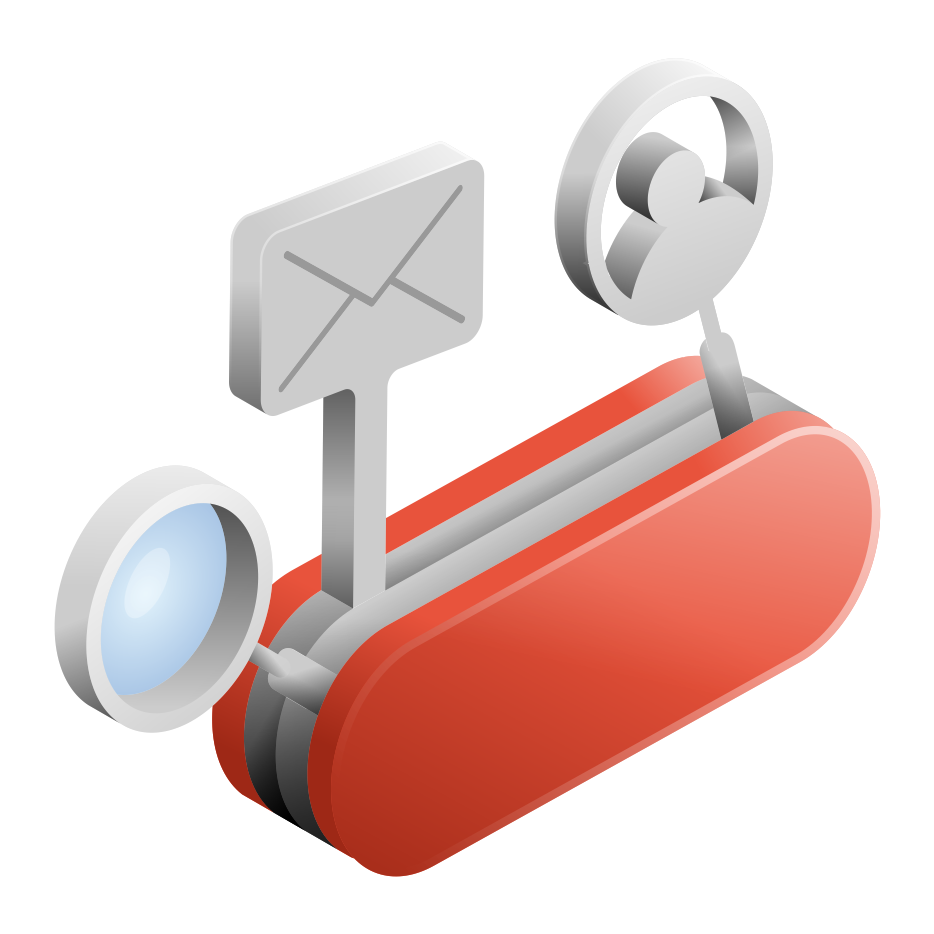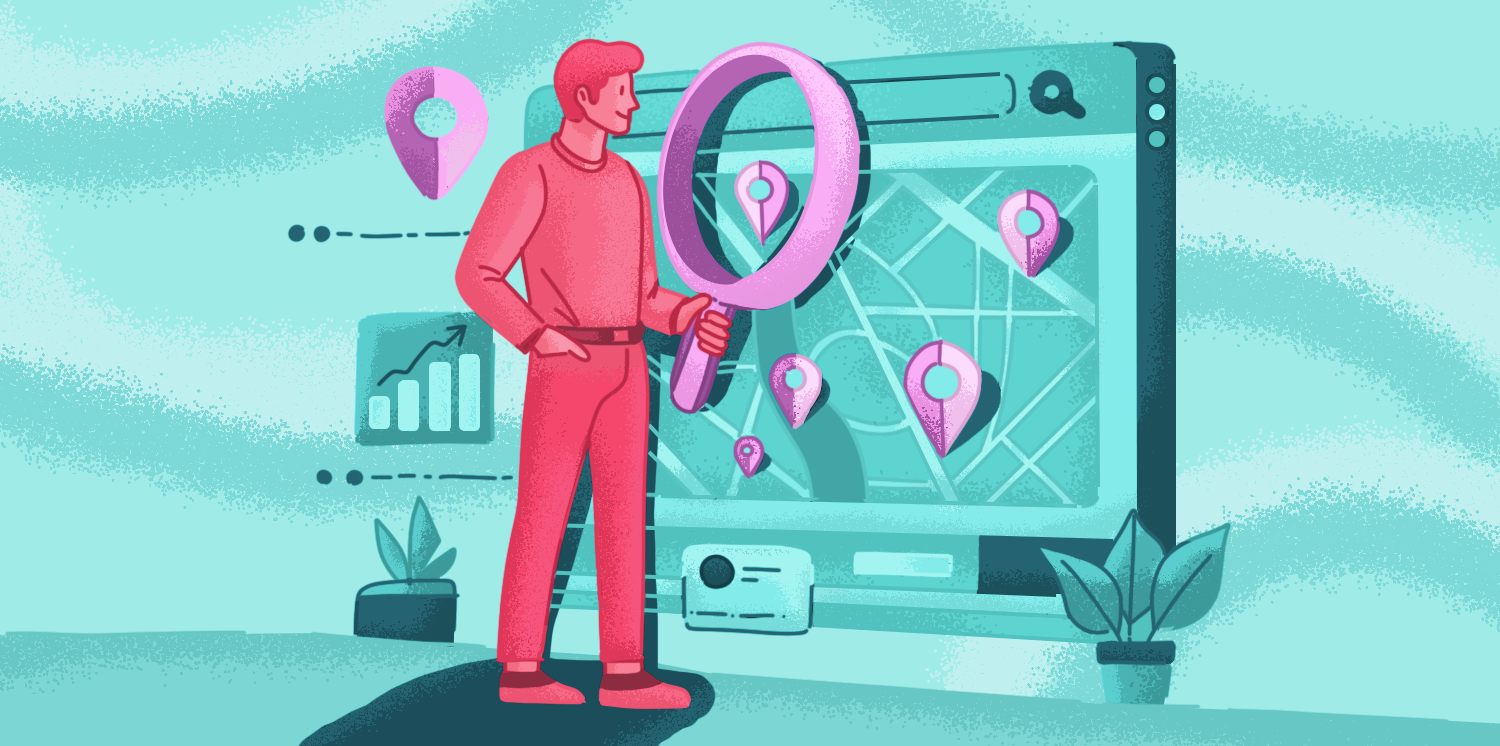Are you looking for more prospecting and lead generation opportunities? Do you want to close more deals and cover your quotas? Then, it’s important to know the difference between various types of leads and how they move through the pipeline.
In this article, you will find a breakdown of the most popular lead categories, each with unique characteristics and nurturing requirements. We will also explain the role of lead generation sources like email marketing, social media, or conferences in shaping marketing strategies.
Ready to become a guru of lead generation? Let’s begin!
Outline
What are sales leads?
Sales leads are people or companies that have shown interest in your product or service but have yet to make a purchase. This interest can manifest in various ways, from requesting a demo to subscribing to your newsletter.
Leads are the lifeblood of sales and marketing. They’re potential customers who fuel conversion funnels and keep business pipelines flowing, from prospecting to closing a deal.
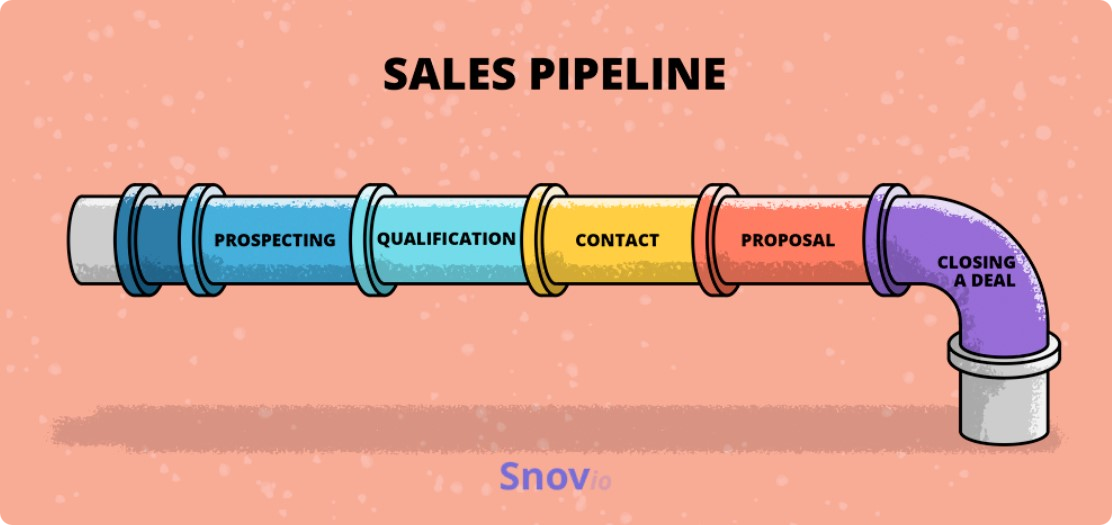
There are different types of leads, depending on their interest and qualification stage. What is more, sales and marketing leads are generated through various channels and methods, such as advertising, email, social media, SEO, PPC, etc., which makes the source of leads another category for their classification.
Knowing the types of sales leads ͏and how to convert them is crucial for any sales or marketing team as it allows focusing time and effort exclusively on those prospective customers who are really prospective, i.e., ready to buy. In some cases, businesses might consider outsourcing lead generation to increase efficiency.
In the following chapters, we’ll examine different types of leads based on their traditional classification, generation mechanisms, sources, and industry relevance.
7 key types of sales leads
Traditional classification incorporates seven types of leads according to their readiness to buy, qualification, and other characteristics, which in turn boils down to different ways to nurture and convert them.
|
7 key types of sales leads:
|
1. Cold leads
Cold leads are potential customers with little or no prior interaction with your brand. They are difficult to convert because they may not be familiar with it or have not shown any interest yet.
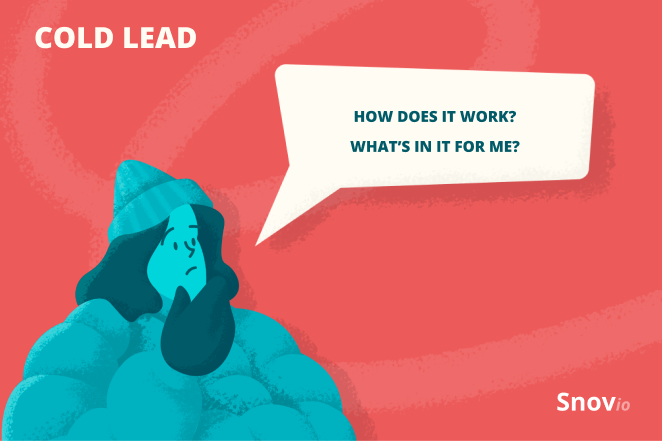
Cold leads can be identified through methods like co͏ld call͏ing, cold emailing, or lead generation software.
The ͏main challenge with cold leads is establishing trust and brand recognition. This requires strategic communication to educate them about your company and your offer. Converting cold leads takes time and resources, as it involves building awareness of your product and gradually moving toward engagement down the pipeline.
Despite the challenges, cold leads are essential for business growth. To incentivize them, take the following steps:
- Identify their pain points and needs.
- Tailor personalized solutions to address their concerns.
- Engage with cold leads via multiple channels (calls, email, social media).
- Provide incentives such as exclusive discounts or free trials.
- Maintain consistent follow-ups and adjust strategies based on feedback.
- Build trust through transparent communication and value demonstration.
- Guide prospects gradually towards conversion by nurturing relationships.
2. Warm leads
A warm lead is priceless in sales and marketing because they are familiar with the brand or product and have already shown some interest. Unlike cold leads, who have no prior interaction, warm leads have taken actions like visiting the website or engaging with the company’s content on social media.
They are more open to communication efforts and already understand the brand’s ͏offerings, which makes it easier to guide them along the sales funnel.
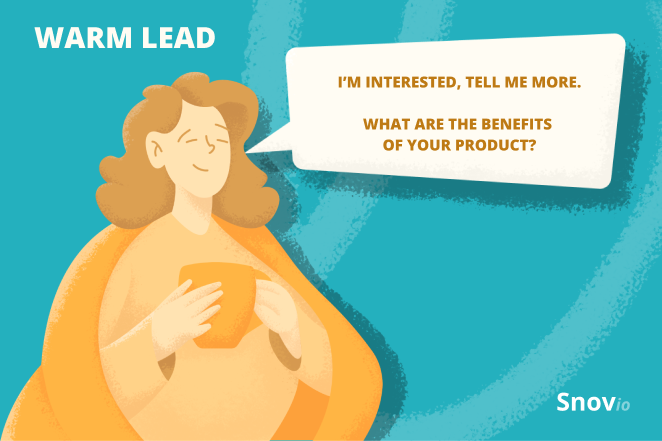
Warm leads require less effort to convert them to paying customers, but you still have to be proactive in order to achieve your goal:
- Acknowledge previous interactions and establish rapport.
- Continue to provide valuable information tailored to their interests.
- Offer personalized solutions aligned with their needs and preferences.
- Showcase success stories or case studies relevant to their situation.
- Provide incentives to encourage prompt action or decision-making.
- Maintain regular communication to keep the momentum going.
- Listen actively to their feedback and address any concerns promptly.
- Guide them through the next steps of the purchasing process with clear instructions and support.
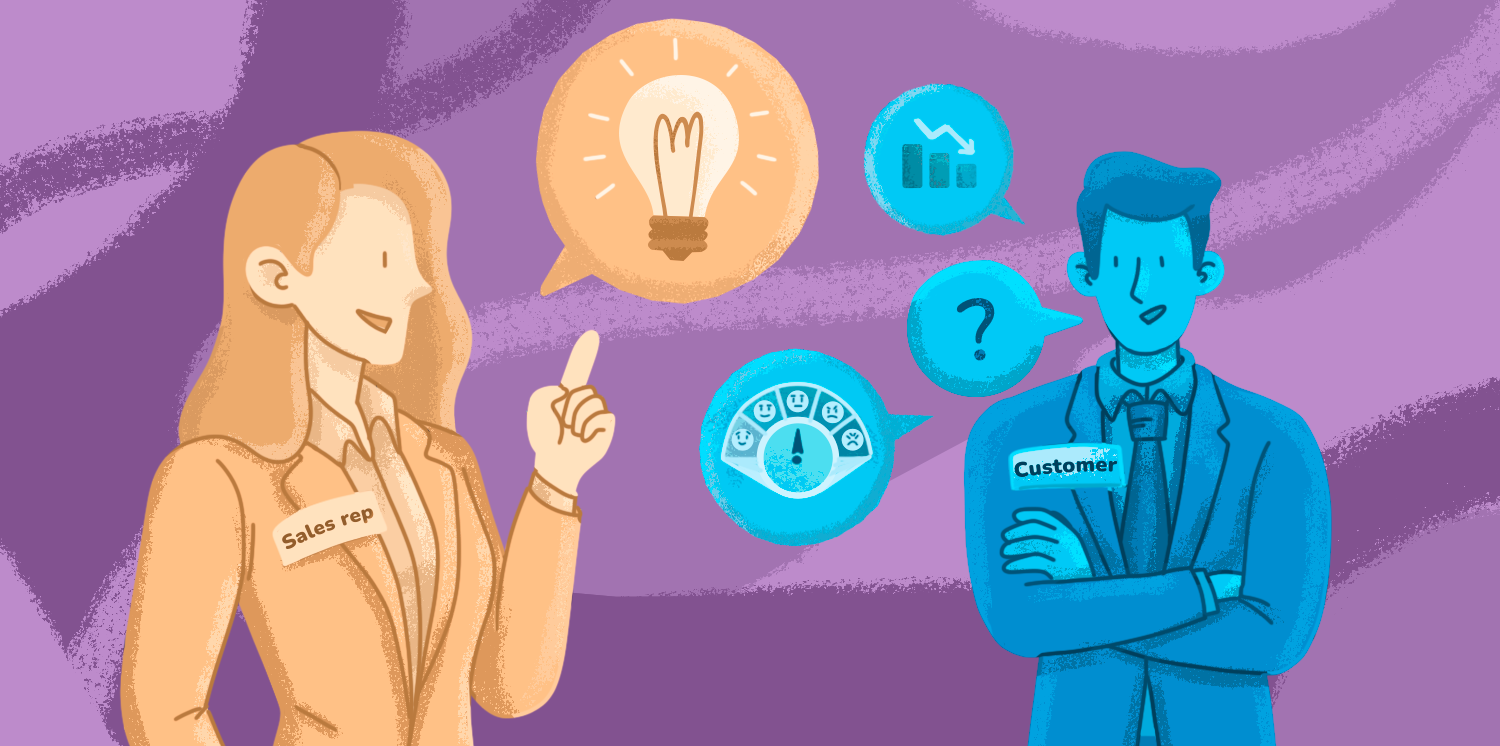

How To Convert Leads Into Customers: Practical Guide
November 7 2025
3. Hot leads
A hot lead is a potential customer who has shown a strong interest in a product or service and is ready to make a purchase. Being typically decision-makers, these people have either directly interacted with sales teams, requested detailed information, or actively engaged with marketing materials.
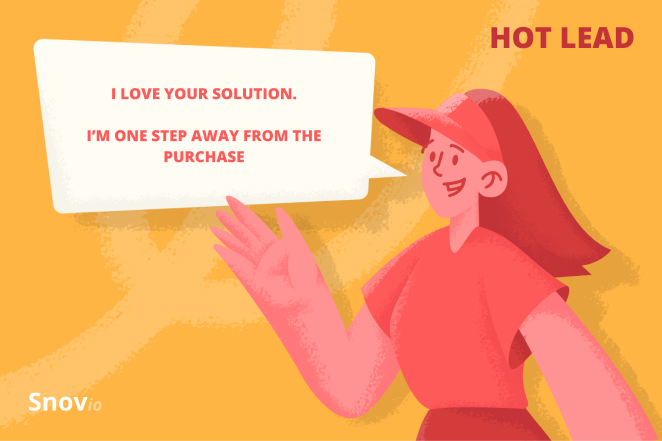
Because of their high likelihood of converting into customers, you should give them top priority in your sales approach. The good news is that you can mainly implement the actions you’d use for warm leads, including the following:
- Nurture these leads with focused attention and customized solutions.
- Facilitate direct communication with sales or support teams for smoother transitions.
- Provide relevant resources or materials to facilitate their decision-making process.
- Handle any objections professionally.
The following four types of leads are determined based on their qualification stage in the funnel and readiness for sales engagement.
4. IQLs (information qualified leads)
An information qualified͏ lead (IQL) is an individual who is in the early stages of the buying process. They express interest by seeking additional information, usually in exchange for their contact details. They commonly use free resources such as eBooks or register for ͏webinars. This initial interaction indicates a curiosity or need, but not a definite intention to make a purchase͏.
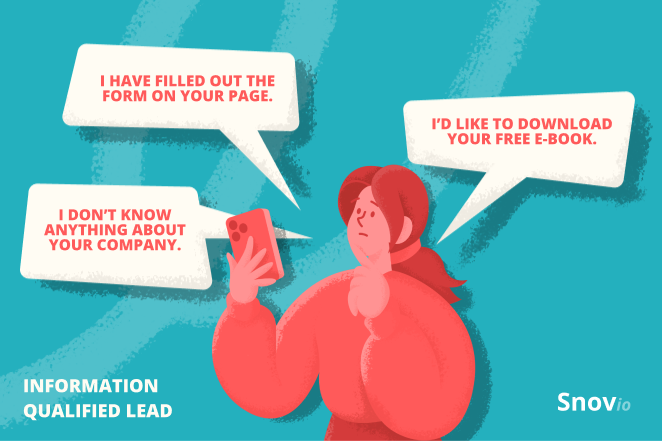
To move IQLs further down the sales funnel, do the following:
- Carefully research their interests in learning more about your company and the value you offer.
- Maintain communication via emails and newsletters to keep them engaged.
- Provide them with relevant and educational content, gently guiding them towards becoming more qualified leads, such as Marketing qualified leads (MQLs) or Sales qualified leads (SQLs).
5. MQLs (marketing qualified leads)
A marketing qualified lead (MQL) is a potential customer who has shown interest in a company’s products or services by engaging with the marketing content. These lea͏ds are a step closer to the purchase than IQLs and typically interact with your product or services through activities such as downloading case studies, watching promo videos, or attending webinars.
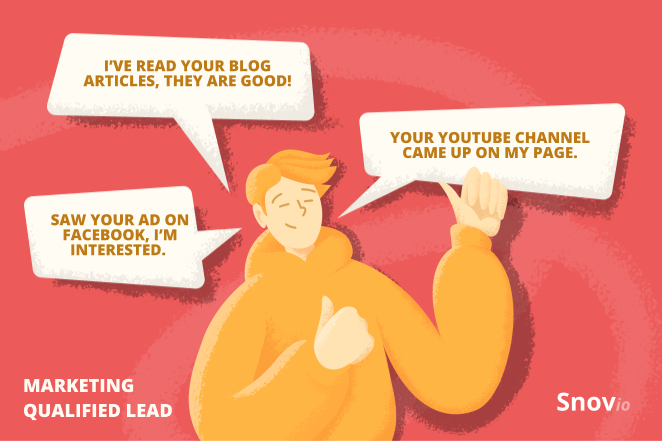
The challenge with MQLs lies in nurturing these leads with targeted marketing to move them closer to making a purchase.
Here is how you may convert these leads:
- Offer personalized content.
- Utilize marketing automation for timely follow-ups and engagement tracking.
- Provide solutions that are aligned with their needs and have transparent communication.
|
💡 Pro-tip With the Snov.io LinkedIn Automation Tool, you can build multichannel outreach campaigns and engage with your leads across various platforms! Here’s what you can do:
🤨 Worried about data safety? Snov.io has got your back.
🍬 Thanks to the Snov.io LinkedIn Automation Tool, Your LinkedIn Social Selling Index will also grow, alleviating the networking process on LinkedIn. |
6. PQLs (product qualified leads)
A product qualified lead (PQL) is a step ahead of the marketing-qualified lead (MQL) as they are considered more sales-ready. As a rule, these leads already got value from your product or solution. For example, they might have tried your free trial or watched your demo, and as a result, they know a little about how your product works.
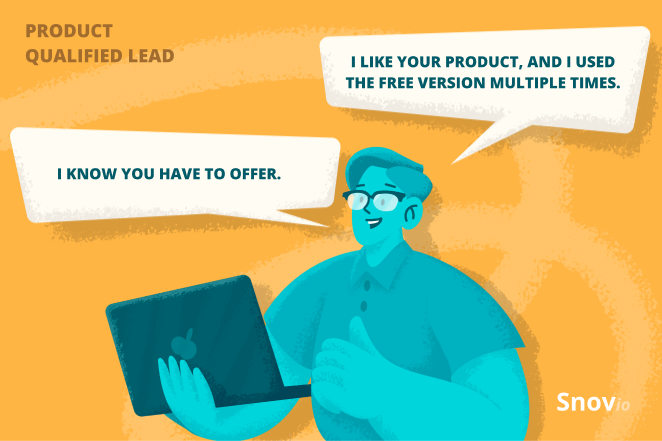
To move these leads further through the funnel:
- Surprise them offering personalized demos or trials.
- Provide educational content relevant to their needs and your solution.
- Use analytics to identify how they prefer to communicate with your brand to tailor your further outreach.
- Align with a sales team to be ready to provide more specific information about your product and face any objections.
7. SQLs (sales qualified leads)
A sales qualified lead is a lead who has been identified as ready for direct sales engagement. They have under͏gone a qualification process that typically evaluates their budget, authority, need, and timing (BANT).
SQLs are usually at a more advanced stage in the buyer’s journey, having met criteria that indicate a higher likelihood of making a purchase. They are often the result of nurturi͏ng ͏MQLs with the right information and engagement.
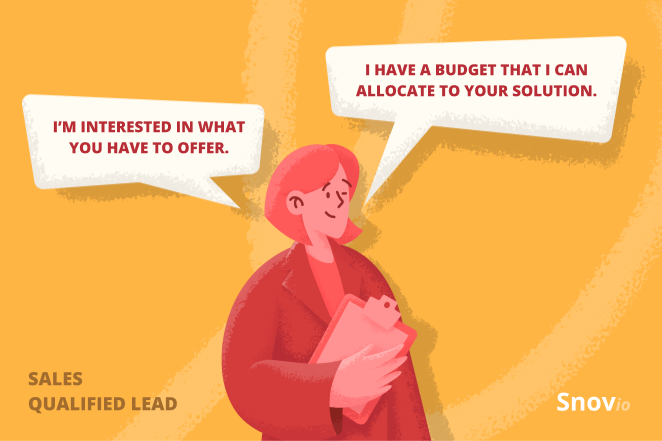
As a rule, sales qualified leads are hot leads, so the tactics you should use to convert them will look the same as with hot leads. Just remember, the focus with SQLs should be on closing the sale as they have demonstrated both interest and the potential capability to make a purchase.
Here is a comparative table for you to get all traditionally classified leads in one place:
| Criteria | Lead type | Funnel stage | Definition |
| Buyer readiness | Cold leads | Top of the funnel | Leads who haven’t yet interacted with your company but overall fit your customer profile |
| Warm leads | Middle of the funnel | Leads that haven’t shown explicit interest in buying from you but know who you are and what you offer | |
| Hot leads | Bottom of the funnel | Leads that show interest in your product or service and are likely to make a purchase | |
| Qualification | Information qualified leads (IQLs) | Top of the funnel | Leads that have filled the form on your website and now are looking for more information about your product or service |
| Marketing qualified leads (MQLs) | Middle of the funnel | Leads that are familiar with your brand and engage with your content | |
| Product qualified leads (PQLs) | Middle of the funnel | Leads that have already received some value from your product, such as through a free trial or freemium version of your product | |
| Sales qualified leads (SQLs) | Bottom of the funnel | Leads that have actively expressed interest in your product or service |
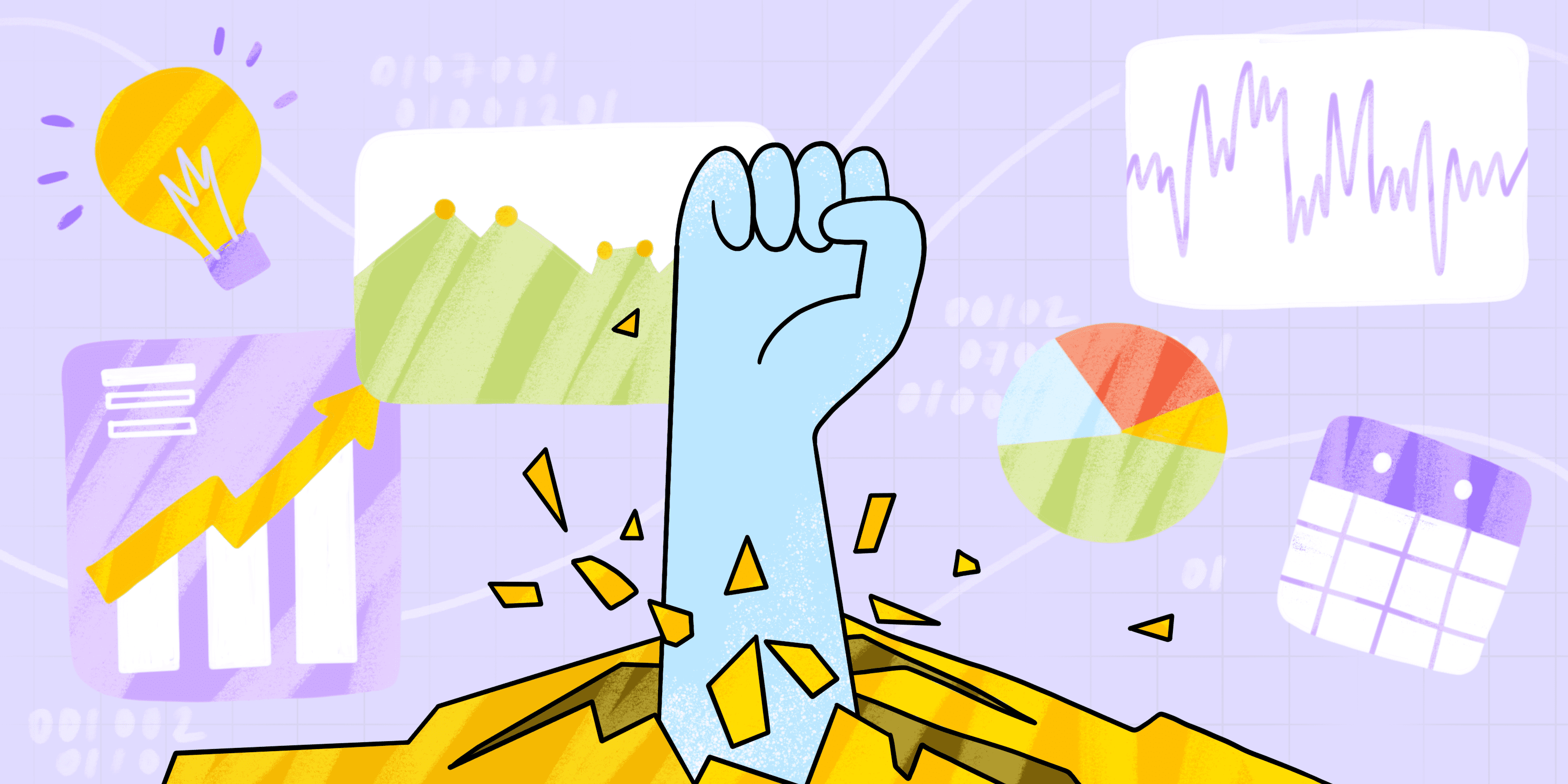
How To Build Proactive Strategy For Marketing And Growth
November 1 2024

Awareness, Consideration & Decision: How To Convert At Each Stage
November 10 2025
Types of leads based on outreach
Based on how you generate your leads, they can be divided into two types: inbound and outbound.
What are inbound leads?
Inbound leads are potential customers who proactively express interest in a product or service by engaging with your company’s content, website, or marketing campaigns. These leads are attracted to the brand through tactics such as:
- content marketing
- search engine optimization (SEO)
- social media engagement
- referrals
Inbound leads typically have a higher level of intent and are often considered more qualified as they have initiated contact with the company themselves. CRMs with unified sales and marketing tools, like HubSpot, can help attract and identify inbound leads by channel and reach out to them through personalized email campaigns.
What are outbound leads?
Outbound leads are prospective customers who may not have previously expressed interest in the company’s products or services and are reached out to proactively by a company through various marketing or sales efforts. This can include methods such as:
- cold calling
- cold emailing
- direct mail
- targeted advertising
Unlike inbound leads, which come to your company themselves, outbound leads require you to initiate contact with them.
Today, you can generate and reach out to outbound leads using automation tools like Snov.io. This platform allows you to find contact information of these leads anywhere in the web, including social networks like Twitter or Linkedin, save it to your database, segment your outbound leads based on your goals and needs, and launch super targeted email campaigns that will be personalized no matter how many leads you decide to reach out to at once.
Types of leads based on the lead channel
In this chapter, we’ll talk about the types of leads based on the sources where you can generate them from.
|
Types of leads based on the lead generation source:
|
Email marketing leads
Leads generated through ema͏il mar͏keting are highly valuable because this channel enables you to send personalized messages to specific groups, fostering personalized communication and stronger connections. Such leads are more likely to convert as they have already learned about or shown interest in your brand or product.
For e Snov.io, you can ensure continuous lead nurturing through regular updates, promotional offers, and informative content. This tool allows you to create smartly programmed email chains with automated follow-ups, which helps you convert leads into customers faster.
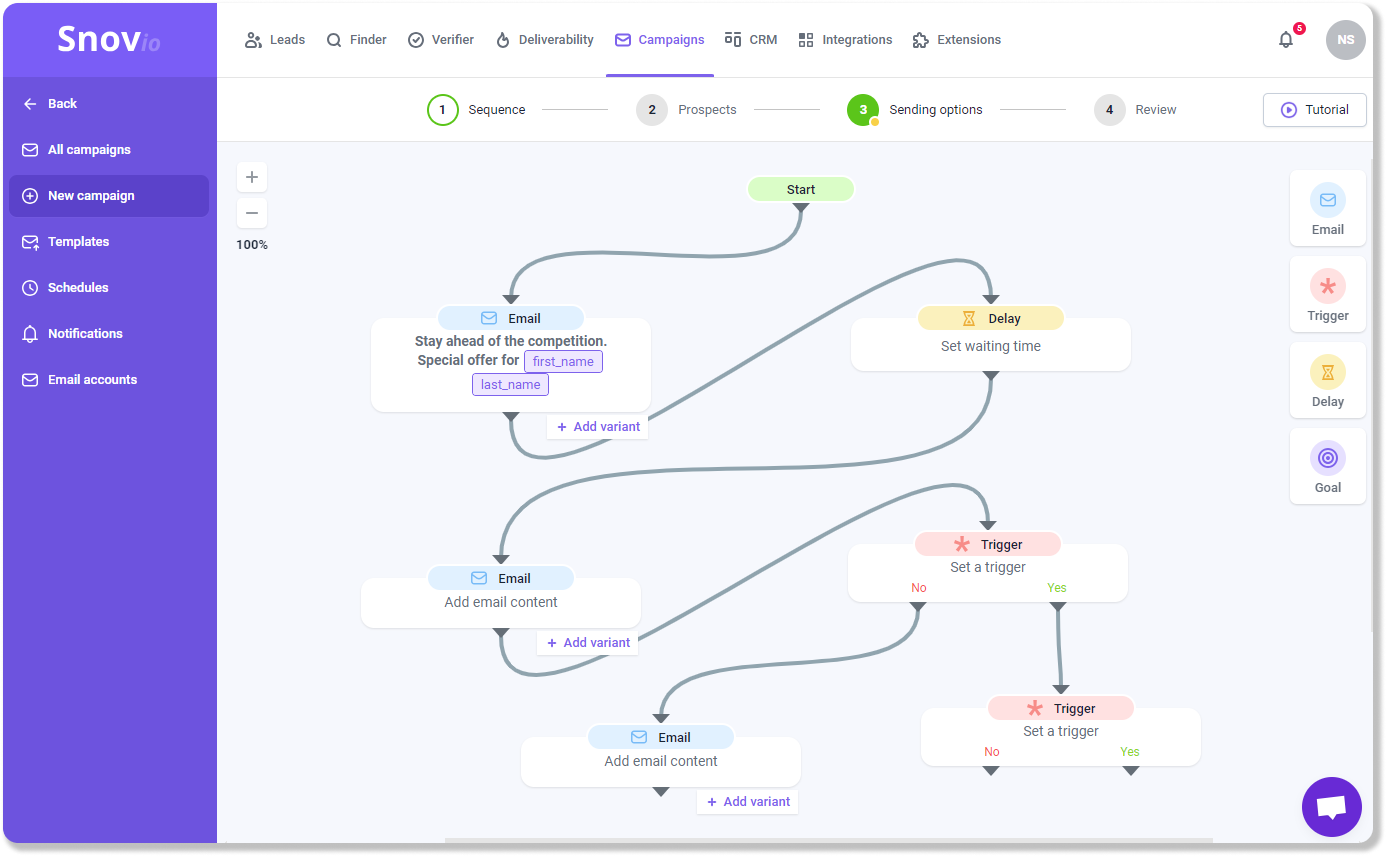
Social media leads
Social media is essential for lead generation as it identifies potential customers through their active engagement with your company’s ͏content. These leads commonly have a genuine interest in the brand, which makes them more receptive͏ to your marketing campaigns.
Successful lead generation on social media involves creating high-quality content, engaging with the audience, and fostering a sense of community. ͏However, converting social media leads requires a delicate approach ͏focused on building relationships and trust rather than aggressive selling tactics.
Traditional ads leads
Traditional ads are a proven way to reach potential customers in sales and marketing. Displayed on various media platforms like newspapers, magazines, billboards, and television, they aim to create brand awareness and capture a wide audience. Unlike digital marketing, traditional ads target a broader demographic, resulting in less specific leads. However, they can still help you find people who may not be actively seeking your product or service.
The success of these ads depends on factors like creativity, placement, and relevance to the target audience.
PPC advertising leads
PPC (paid-per-click) advertising helps to generate high-value leads through targeted campaigns, where advertisers pay for each click. These leads usually actively search for specific products or services, having a strong intention to purchase. PPC allows for precise targeting based on keywords, demographics, and user behavior.
Success in PPC lead generation depends on selecting proper keywords, ensuring ad copy relevance, and creating high-quality landing pages. Though PPC leads may be more expensive, their potential for ͏conversion justifies the investment. To maximize ROI, you should continuously optimize campaigns and implement effective follow-up strategies to convert leads into customers.
SEO leads
SEO-generated leads are highly important for your company as they come from organic sources. These ͏leads find your͏ website by ͏searching for specific keywords on search engines like Google. SEO leads have a higher level of intent and interest as they actively seek information or solutions. They are more likely to be engaged and interested in your business.
Effective SEO strategies involve optimizing website content, structure, and on-site elements to improve visibility and rankings in search engine results. This makes your site more accessible to potential customers. However, generating leads through SEO requires consistent effort in keeping up with search engine algorithms and creating high-quality content.
B2B list-building software leads
Leads generated from͏ B2B list-building software are sourced͏ using tools that compile͏ business contact ͏information relevant to specific͏ industries or niches. These tools help identify potential business clients, offering a streamlined way to gather and organize leads for B2B marketing and sales.
B2B list-building software typically features robust data filtering and segmentation capabilities, allowing for targeted outreach. For instance, Snov.io provides a Database search feature for finding leads that match the criteria of your ideal customer profile, including location, job title, industry, location, and more:
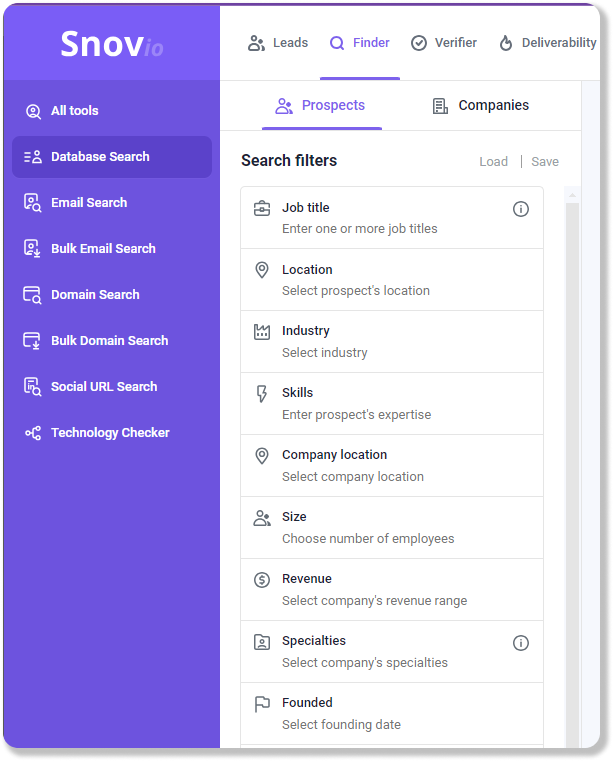
Events leads
Business events such as conferences or summits serve as a source of hi͏gh-value leads due to the personal interaction and engagement they offer. By bringing together industry professionals, such events create opportunities for direct networking, brand exposure, and relationship building.
Leads generated at business events are typically more informed and interested as they could have an opportunity to engage with your company representatives and gain firsthand͏ knowledge about your products or services. Nurturing these leads involves leveraging the initial in-person connection and reinforcing the value proposition presented at the event.
Types of leads by business services
In the final chapter, we’ll discuss some of the most widely recognized types of leads in sales leads based on business services. If your company offers any of these services, feel free to learn more about how to nurture and convert them.
|
Types of leads by business services:
|
AI/ML leads
AI/ML (Artificial Intelligence/Machine Learning) leads are prospects interested in AI or ML solutions, typically technology-driven companies, startups, or industries like healthcare, finance, and e-commerce. They want to use Artificial Intelligence or Machine Learning to improve efficiency, analyze data, or automate processes.
To engage these leads, it’s necessary to understand AI/ML technologies, communicate their benefits and ROI, and show expertise in delivering tailored projects. If your company product is AI or ML, focus on how your solution may address the leads’ challenges ͏and demonstrate how your technology can give them a competitive edge.
Recruitment ͏leads
Recruitment leads are prospects who require staffing solutions. They include HR departments, hiring managers, and businesses looking to fill vacancies.
To engage with these leads effectively, it is important to understand their industry, company culture, and desired positions. Demonstrating expertise in talent acquisition and matching candidates to roles is crucial. Building a track record of successful placements and offering personalized, responsive service are key to converting these leads.
Web design leads
Web design leads are interested in website creation or redesign services. They can͏ be businesses, organizations, or individuals who want a professional online presence.
To convert these leads, showcase a strong portfolio, stay updated with web design trends, and have the skills to create ͏user-friendly and visually appealing websites.͏ Communicate how a well-designed website can ͏boost user engagement͏, drive traffic, and help achieve͏ business goals.
SEO leads
SEO leads are individuals or businesses seeking to boost their website’s ͏visibility and ranking on search engines like Google. They aim to increase organic traffic, enhance online presence, and achieve higher search rankings.
To engage these leads effectively, your company should be able to professionally communicate the benefits of effective SEO, such as increased web traffic, higher conversion rates, and overall business growth. To convert leads seeking SEO solutions, you should customize SEO strategies to align with the client’s industry and goals.
Legal leads
Legal leads are individuals or organizations seeking legal help. They can range from people with ͏criminal charges or civil disputes to those needing assistance with estate planning, business contracts, or family law.
Converting leads requires expertise,͏ reliability, and effective communication of how your legal services meet specific needs. ͏Personalized attention͏, prompt responsiveness, and a proven track record are pivotal factors for clients when choosing legal representation.
Healthcare & medical leads
Healthcare and medical leads are potential clients or organizations looking for medical services or products. They include hospitals, clinics, private practices, he͏alth-related businesses, and individuals.
Engaging with these leads requires expertise in healthcare regulations, patient privacy, and industry challenges. To convert these leads, you should provide efficient, high-quality care ͏and advanced medical technologies. What’s more, it’s vital to build trust due to the sensitive nature of health services.
Insurance leads
Insurance leads are potential customers interested in buying insurance products for protection against financial risks. To connect with them effectively, you should understand their needs while demonstrating how your insurance solutions align with their requirements. Initiate prompt follow-ups, and provide value through educational resources and transparent communication,
Your key goal is to build trust, which is vital in this industry, as clients seek reliable advice and long-term security.͏ Effective communication, expertise, and personalized service are key in converting these leads.
Banking leads
Banking leads are interested in banking products and services, such as loans, savings accounts, and investments. To engage with them effectively, try to understand their financial needs and provide tailored͏ solutions.
Building trust is also essential for banking leads as they are in search of secure financial management. Direct communication, your expert opinion, and prioritizing long-term relationships will help you convert these prospects into loyal customers.
Construction leads
Construction sales leads are potential clients in the construction industry interested in building, renovation, or development projects. They include contractors, developers, architects, and homeowners. To convert these leads, understand their project needs, budget, and timeline.
Building strong relationships is important due to the significant ͏investments and long-term commitments involved. Strategies like analyzing past projects, emphasizing expertise, and offering competitive pricing͏ and quality assurance can help convert these leads into valuable clients.
Final thoughts
Understanding lead types is essential for effective sales and marketing strategies. Whether it’s hot or cold leads, each requires a unique approach. Meanwhile, industry-specific leads in ͏healthcare, legal, recruitment, web design, SEO, insurance, and banking have their own challenges.
A powerful toolkit, like Snov.io͏, will help you automate the process of lead generation no matter which leads you’re looking for. Just test its powerful functionality by yourself!
Happy lead generating!


